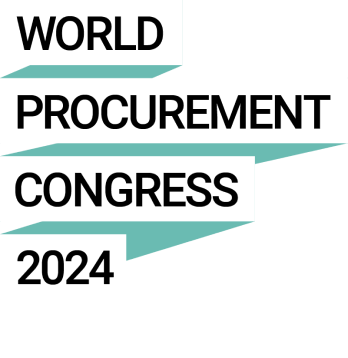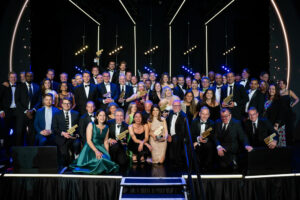Challenge
Like many functions, the procurement team at energy business Uniper had been interested in using crowdsourcing to develop new and innovative solutions to specific challenges, combining the theoretical approach with a real life case study. That is why the collaboration between the Uniper procurement team and the University of Niederrhein in Germany in the context of a master thesis was the perfect opportunity to try and drive this topic forward.
The procurement team refreshed its vision in 2020 and as part of that designed a new logo as well as visual for their cultural model, with the aim of further promoting it internally.
The idea of using crowdsourcing was to create a brand new internal design reflecting this cultural model where six cultural characteristics would be represented with corresponding small stories. With the intention of seeking out-of-the box creativity it was decided to source this brand new design through crowdsourcing.
This design would then be used for producing promotional gifts, which would be given to the whole procurement team.
In addition this test case would give the team an opportunity to promote within Uniper the innovative use of new sourcing methods.
What is crowdsourcing? Crowdsourcing is the practice of engaging a ‘crowd’ or group for a common goal — often innovation, problem solving, or efficiency. It is powered by technologies and social media and can take place on many different levels and across various industries. The connective nature of these technologies means that it is easier for individuals to collectively contribute — whether with ideas, time, expertise, or funds — to a project or cause. This collective mobilisation is crowdsourcing. Ultimately it is a process of tapping into individuals or groups of people, who are linked together with a common interest to bring forward ideas and results through aggregated actions or activities.
Approach
Felix Servos, a masters student from the University of Niederrhein joined the procurement team at the end of 2020, and took charge of bringing crowdsourcing into practice as part of his master thesis.
Working closely with the procurement team, he established a process that would drive these efforts forward. The process he established followed these steps:
- Select product/s: The first step that Servos and the team took was to select the type of products they wanted to create and where they could apply the new design to through crowdsourcing. They wanted something that would be used every day but would also be useful. The products that ticked these boxes would be a mouse-mat and a mug.
- Establish timetable: Having decided on the products to develop, the next step was to establish a timeframe that they wanted to get a final design back through the crowdsourcing process. They set out a month-long timeframe that would cover the whole process from initial contact all the way through to final designs being handed over.
- Select crowdsourcing route: There are many different routes to go down when it comes to crowdsourcing. The Uniper team decided that they wanted to utilise an online marketplace platform of designers. The marketplace they chose to use was 99designs (https://99designs.co.uk/) through which creative experts can be accessed from across the world to engage in different projects. The Uniper team chose this platform because you can utilise different subcategories of design – branding, website design, logos and merchandising etc. You can also pick different levels of service. In this instance the team opted for ‘Gold’, whereby they had access to a tier of designers who were the most highly rated.
- Launch contest: With the platform selected, the team then created a brief that they would give to the designers. They had different rounds that designers would go through in order to select a smaller group that would produce final ideas. These rounds included, qualification, submission of ideas and feedback. In total the team qualified 15 different designers before they subsequently whittled that down to six.
- Provide feedback and select winner: For those six designers in the final rounds, feedback was provided by the team and they were then required to refine their designs over a period of three days. Once those final designs were submitted to Uniper, the team gave themselves two weeks to select a final design.
- Design handover: Once the winner was chosen, the designer then handed over their designs for the team to have the mouse-mat and the mug created. The winning designer was required to sign a ‘license of transfer’, which gives Uniper the freedom to use the design as needed. Uniper only paid the winner for their work, the other designers created their designs for free.
The final products

Outcome
The crowdsourcing project was wholly successful. The team delivered the project in the timeframe laid out and the wider team loved the gifts.
The use of crowdsourcing grabbed the wider business’s attention. It did this from a number of different perspectives. On the one hand, the cost of this approach was significantly lower than it had been in previous attempts, while on the other hand, it highlighted to the business that there was a pool of untapped resource of ideas and solutions that could be tapped into.
Moving forward, the procurement team is engaging with the IT team and looking at some potential crowdsourcing projects to work on together.
Image credit: nitpicker / Shutterstock.com


















